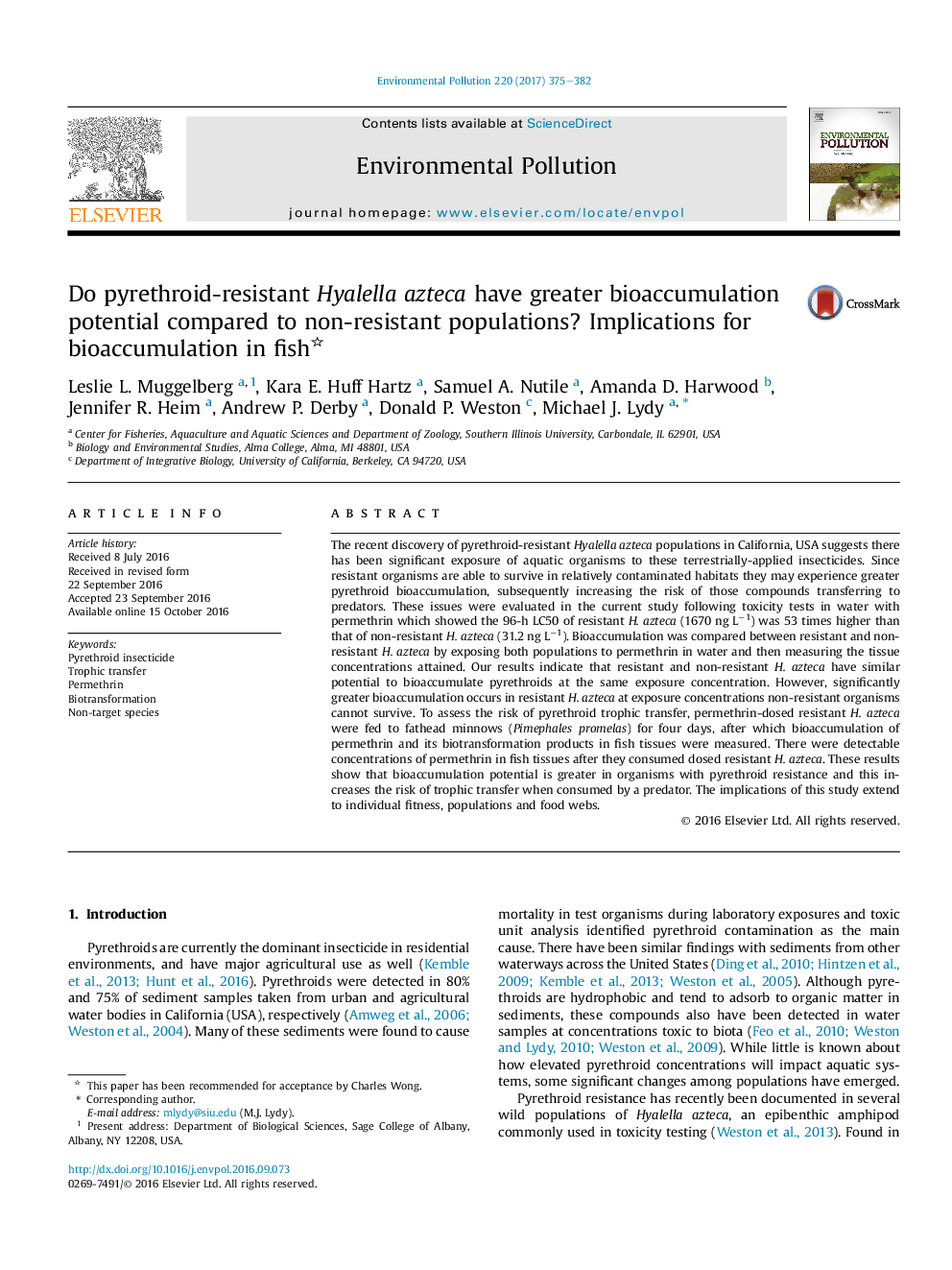| کد مقاله | کد نشریه | سال انتشار | مقاله انگلیسی | نسخه تمام متن |
|---|---|---|---|---|
| 5749229 | 1412476 | 2017 | 8 صفحه PDF | دانلود رایگان |

- Chronic exposure to pyrethroids has led to the evolution of resistance in H. azteca.
- Pyrethroid-resistant H. azteca retained their resistance after 16 months in culture.
- Pyrethroid resistance increases bioaccumulation potential in H. azteca.
- Pyrethroid-resistant H. azteca can serve as a dietary route of uptake to fish.
The recent discovery of pyrethroid-resistant Hyalella azteca populations in California, USA suggests there has been significant exposure of aquatic organisms to these terrestrially-applied insecticides. Since resistant organisms are able to survive in relatively contaminated habitats they may experience greater pyrethroid bioaccumulation, subsequently increasing the risk of those compounds transferring to predators. These issues were evaluated in the current study following toxicity tests in water with permethrin which showed the 96-h LC50 of resistant H. azteca (1670 ng Lâ1) was 53 times higher than that of non-resistant H. azteca (31.2 ng Lâ1). Bioaccumulation was compared between resistant and non-resistant H. azteca by exposing both populations to permethrin in water and then measuring the tissue concentrations attained. Our results indicate that resistant and non-resistant H. azteca have similar potential to bioaccumulate pyrethroids at the same exposure concentration. However, significantly greater bioaccumulation occurs in resistant H. azteca at exposure concentrations non-resistant organisms cannot survive. To assess the risk of pyrethroid trophic transfer, permethrin-dosed resistant H. azteca were fed to fathead minnows (Pimephales promelas) for four days, after which bioaccumulation of permethrin and its biotransformation products in fish tissues were measured. There were detectable concentrations of permethrin in fish tissues after they consumed dosed resistant H. azteca. These results show that bioaccumulation potential is greater in organisms with pyrethroid resistance and this increases the risk of trophic transfer when consumed by a predator. The implications of this study extend to individual fitness, populations and food webs.
143
Journal: Environmental Pollution - Volume 220, Part A, January 2017, Pages 375-382